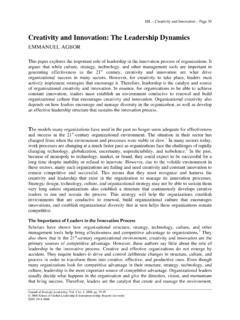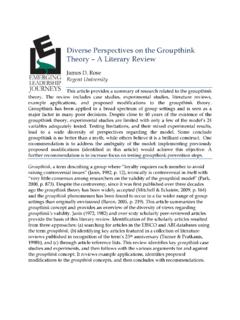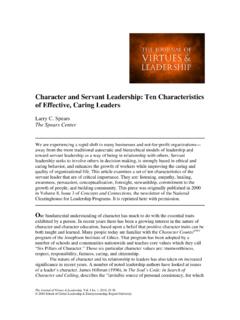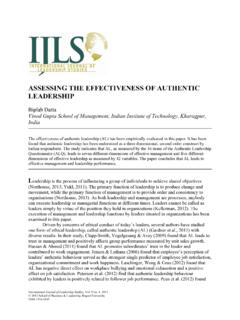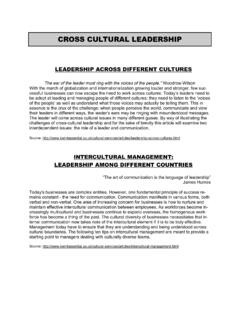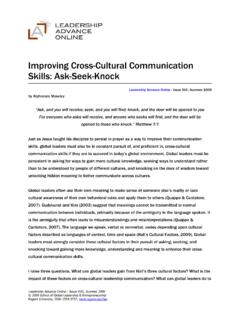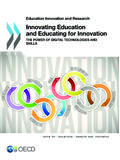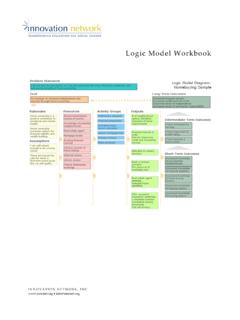Transcription of Creativity and Innovation: The Leadership Dynamics
1 JSL Creativity and innovation Page 39 Journal of Strategic Leadership , Vol. 1 Iss. 1, 2008, pp. 39-45 2008 School of Global Leadership & Entrepreneurship, Regent University ISSN 1941-4668 Creativity and innovation : The Leadership Dynamics EMMANUEL AGBOR This paper explores the important role of Leadership in the innovation process of organizations. It argues that while culture, strategy, technology, and other management tools are important in generating effectiveness in the 21st century, Creativity and innovation are what drive organizational success in many sectors. However, for Creativity to take place, leaders must actively implement strategies that encourage it. Therefore, Leadership is the catalyst and source of organizational Creativity and innovation . In essence, for organizations to be able to achieve constant innovation , leaders must establish an environment conducive to renewal and build organizational culture that encourages Creativity and innovation .
2 Organizational Creativity also depends on how leaders encourage and manage diversity in the organization, as well as develop an effective Leadership structure that sustains the innovation process. The models many organizations have used in the past no longer seem adequate for effectiveness and success in the 21st-century organizational environment. The situation in their sector has changed from when the environment and processes were stable or In many sectors today, work processes are changing at a much faster pace as organizations face the challenges of rapidly changing technology, globalization, uncertainty, unpredictability, and In the past, because of monopoly to technology, market, or brand, they could expect to be successful for a long time despite inability or refusal to innovate.
3 However, due to the volatile environment in these sectors, many such organizations are failing and need Creativity and constant innovation to remain competitive and successful. This means that they must recognize and harness the Creativity and Leadership that exist in the organization to manage its innovation processes. Strategic design, technology, culture, and organizational strategy may not be able to sustain them very long unless organizations also establish a structure that continuously develops creative leaders to run and sustain the process. This strategy will help the organizations establish environments that are conducive to renewal, build organizational culture that encourages innovations, and establish organizational diversity that in turn helps these organizations remain competitive.
4 The Importance of Leaders in the innovation Process Scholars have shown how organizational structure, strategy, technology, culture, and other management tools help bring effectiveness and competitive advantage to They also show that in the 21st-century organizational environment, Creativity and innovation are the primary sources of competitive advantage. However, these authors say little about the role of Leadership in the innovative process. Creative and effective organizations do not emerge by accident. They require leaders to drive and control deliberate changes in structure, culture, and process in order to transform them into creative, effective, and productive ones. Even though many organizations look for competitive advantage in their structure, strategy, technology, and culture, Leadership is the most important source of competitive advantage.
5 Organizational leaders usually decide what happens in the organization and give the direction, vision, and momentum that bring success. Therefore, leaders are the catalyst that create and manage the environment, JSL Creativity and innovation Page 40 Journal of Strategic Leadership , Vol. 1 Iss. 1, 2008, pp. 39-45 2008 School of Global Leadership & Entrepreneurship, Regent University ISSN 1941-4668 organizational culture, and strategies that encourage and sustain innovation , effectiveness, and success in the organization. When the organization establishes its strategy and work processes, the leaders direct the implementation that brings it to accomplishment. Technology, right culture, and strategy are necessary and contribute to the success of the organization.
6 However, for any of these vital aspects to bring any real benefit, the Leadership must support, sustain, encourage, and inspire followers to make it work. Therefore, for the innovation process to begin in any organization, that organization must first put the right leaders and Leadership structure in place. Moreover, the leaders must themselves be interested in innovation ; otherwise, they can stifle Creativity and innovation in the organization. The top leaders in the organization usually have the power and authority to develop strategies that lead to innovation , which means if they are unable to perceive opportunity for renewal, do not wish to exploit them, or are unable to respond to them, these leaders can impede innovation . Conversely, if the leaders objectives are dynamic, ambitious, and innovative, and if they demonstrate proactive attitudes as well as a capacity to respond to change, this can help bring innovation , renewal, and success to the organization.
7 Some management theorists argue that effective strategy, culture, efficient work processes, and other management tools not Leadership determine organizational For example, they point to the Japanese auto industry and technology to show how their strong corporate culture helped in their success. Moreover, empirical research demonstrates the importance of culture in organizational However, Schein has also shown that leaders are the ones who develop the culture of the For example, when IBM had to change its culture in order to renew the organization, it brought in a new CEO, Lou Gerstner. Similarly, it took Jack Welch, a new CEO, to change the culture of General Electric to help it become highly innovative and successful. Cameron and Quinn assert that culture change will not occur without the involvement, commitment, and active support of leaders who repeatedly work to convince the members of the organization of the benefits and need for an organizational culture Organizations with weak Leadership tend to be less effective and are prone to constant restructuring and downsizing in order to solve their problems.
8 On the other hand, organizations with creative and effective leaders work to avert the need for major restructuring and downsizing. These leaders run the organization effectively and therefore prevent it from reaching the stage of having to undertake major The consulting firm CSC surveyed 497 firms in the and 1,245 firms in Europe that undertook reengineering. Eighty-five percent reported little or no gain from their However, companies like Motorola, Compaq, and General Electric implemented successful reengineering initiatives because they had creative and effective leaders to manage the Other companies have used Total Quality Management (TQM) initiatives or downsizing to achieve efficiency. Many of these companies have likewise failed. Rath and Strong, a consulting firm, surveyed Fortune 500 companies who had implemented TQM initiatives and found that only 20% achieved their objectives.
9 Likewise, a survey from the American Management Association found that less than 45% of downsized companies in the last decade reported any increase in These statistics seem to show that many companies who have undertaken reengineering initiatives have failed because of the lack of creative and effective Leadership to manage the process. This shows that management tools alone cannot ensure organizational JSL Creativity and innovation Page 41 Journal of Strategic Leadership , Vol. 1 Iss. 1, 2008, pp. 39-45 2008 School of Global Leadership & Entrepreneurship, Regent University ISSN 1941-4668 Creativity that leads to innovation , effectiveness, and success. Organizations need creative and effective Leadership to help the management tools work. Even though organizations cannot usually reach their goals without effective Leadership , many are lacking the kind of Leadership that encourages Creativity and produces success.
10 According to Senge and Deming, many of the problems and failures that face organizations come from lack of creative Consequently, Leadership is the fundamental and foundational competitive advantage for success because without the right creative and effective Leadership in organizations, the strategy, technology, and innovations will not help it succeed. Organizations need creative and effective Leadership to manage the implementation of the strategy and encourage innovation in the organization. According to a study by Andersen Consulting, the stock price of companies perceived to have creative Leadership grew 900% over a 10-year period, compared with just 74% growth in companies perceived to lack creative Leadership . Therefore, the key to creative renewal in organizations is their capacity to create a structure that develops new creative leaders to manage the The Type of Leadership that Encourages innovation The Leadership structure of organizations help produce results that can encourage Creativity and innovation .
